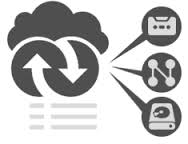
Today, backing up to disk vs. tape has become a popular alternative to the traditional tape methodology. For many computer applications, it's important to have backup data immediately available when the primary disk becomes inaccessible. In this scenario, the time to restore data from tape would be considered unacceptable. Disk backup is also a better solution because data transfer can be four-to-five times faster than is possible with tape.
So what is driving this new trend?
Increase in disk capacity – you can get disk drives from 73GB to 6TB now and growing fast in the last 10 years (up to 84 times more capacity now available)
Smarter disk technology - Now it’s very easy to expand and increase disk storage with SAN, SAS, iSCSI and NAS technology
Smarter disk software - with added capabilities: storage virtualization, efficient storage use through deduplication, compression and thin provisioning
Smarter disk disaster recovery capabilities through snapshots and replication technologies
As a result of the above, backing up to disk is a viable and economical solution that provides the following benefits:
- Less reliance on tape libraries, drives and tape failures
- Restore faster from disk vs. tape
- Faster monthly/yearly tape archive creation with disk to tape vs. tape to tape
The Pros and Cons
Keep in mind that disk to disk replication between sites (primary site to Disaster Recovery site) can be used for DR purposes instead of sending tapes offsite. This will save time to send and recover the tapes and money for transport.
An alternative is to build in extra redundancy to your backup environment by also creating monthly archives to tape. Tape is cheap and boasts incredible write speeds. However, data restores can also be unreliable with tape, because of the fragility of tape and also because data searches are often impossible unless the user knows the tape and file names required. Loss and theft are also problems commonly associated with tape.
A disk to disk to tape (D2D2T) is another concept that provides the best of both worlds. It allows the administrator to automate daily backups on disk so he has the ability to implement fast restores and then move data to tape when he has time. The use of tape also makes it possible to move more mature data offsite for disaster recovery protection and to comply with regulatory policies for long-term data retention at a relatively inexpensive cost.
Therefore, you need to assess how much redundancy you need, your SLA requirements and budget. An expert advisor, such as Sentia, can assess the optimal solution to fit your business objectives.
Feel free to contact me at 1-866-610-8489 or drop me a line to discuss and provide guidance.
Paul Oh, Vice President Services
Sentia